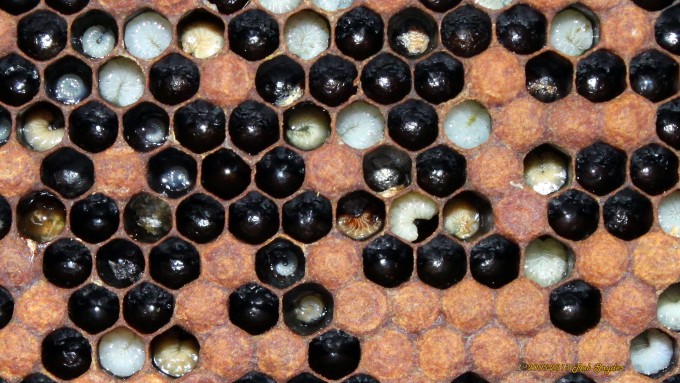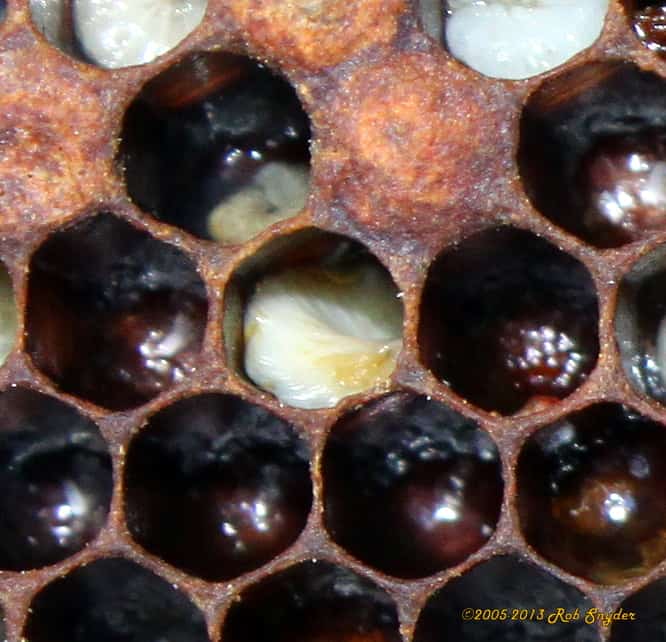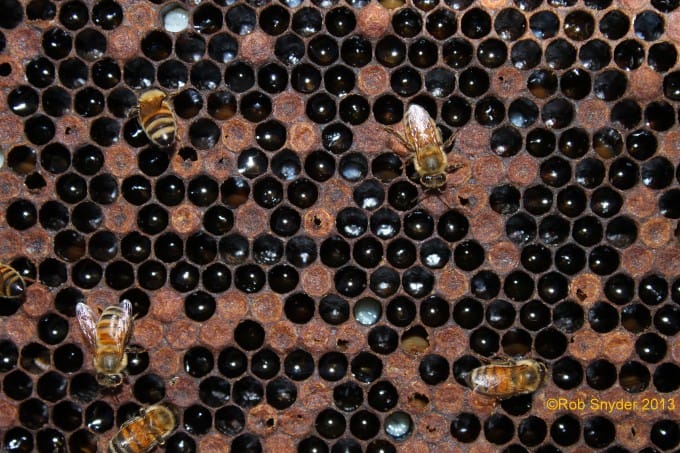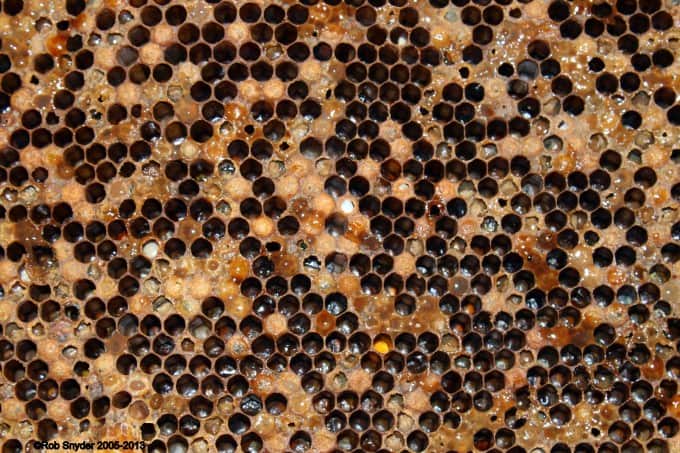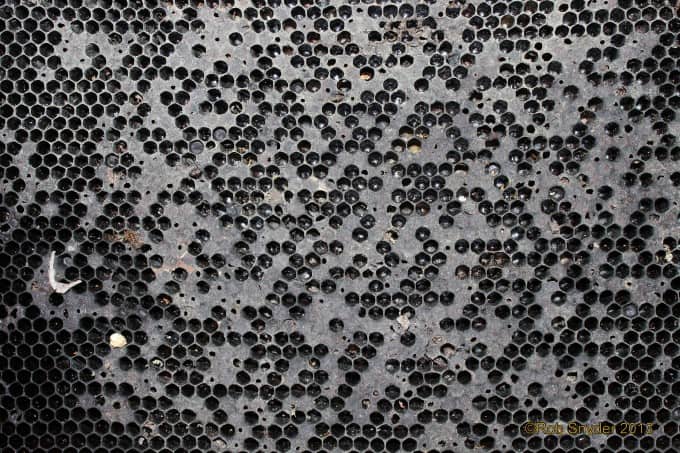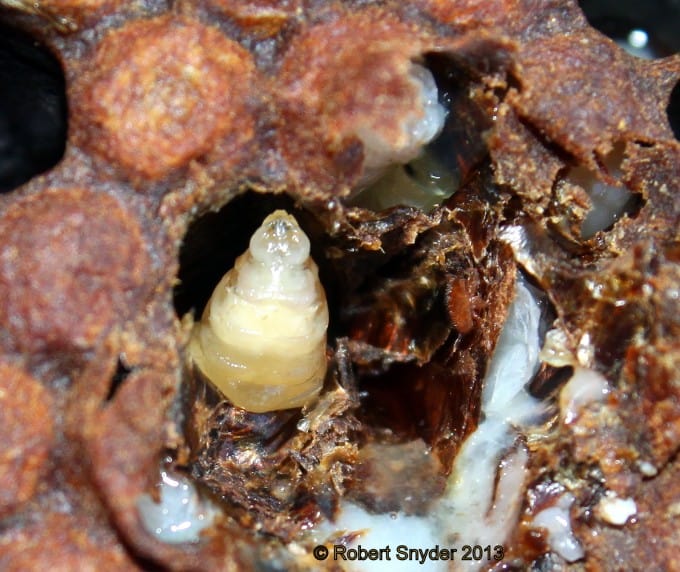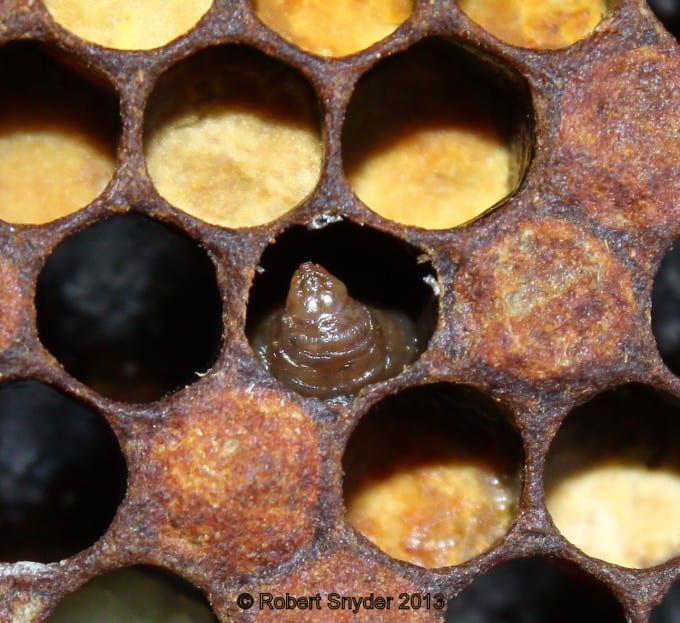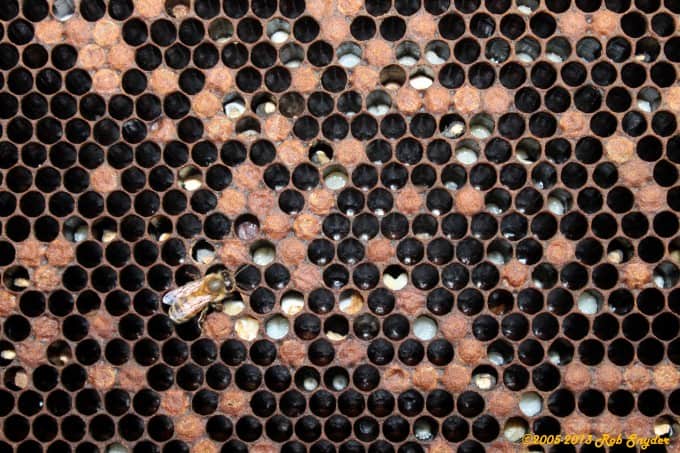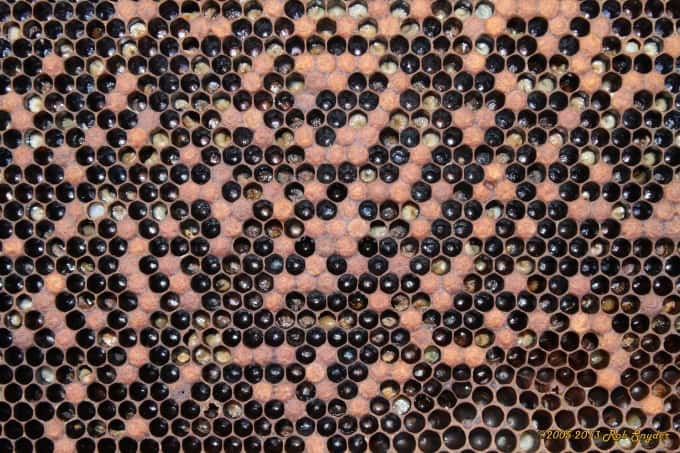Posted 4/17/2013
This blog was changed from the original post. The title has changed from Pesticide brood Kill to Unknown Brood Damage. This change was in response to the comments I have received both on this blog and by emails, I want to clarify a few of my comments. First, I regret the original title of the blog as correctly noted; I had no concrete evidence that it was a pesticide brood kill. No pesticide analysis was done on the pollen or bees because, as I mentioned in the comments section, this beekeeper knew what was being sprayed, when it was being sprayed and the bees consistently degraded in this area, year after year. I have provided clear examples in the photos below of other suspected diseases and I think they clearly show that this was probably not a brood disease, nor “BPMS or as it has more recently been termed Idiopathic Brood Disease Syndrome (IDBS).”
I have seen this type of brood damage only once in my career and it was a documented case of pesticide brood damage in Hawaii. We do strive to be transparent and for these blogs to generate discussion so we are going to keep this post up and I hope you find the added photos and the explanations on those photos helpful.

It’s not every day that you get to see chemical damage on a frame of brood in a honey bee colony. When you look at chemical damage in a hive it may look similar to other brood diseases but the symptoms just don’t add up to anything and you can clearly tell something is wrong with the brood. In this case a beekeeper contacted us and asked us to go out and look at colonies stationed in sunflowers for two weeks or more. There were also other crops around like vine seed and cotton. It was noted that the cotton in the area was sprayed and was still being sprayed with the insecticide “Belay”; however,the beekeeper did not notice the bees working the cotton. Belay is a third generation neonicotinoid used as a broad spectrum insecticide containing the active ingredient Clothianidin. It is used to treat for leafhoppers, beetles, plant bugs, aphids and Brown Marmorated Stink Bug (BMSM.) We then went out to inspect the colonies. They appeared to be good shape collecting pollen and nectar from the sunflowers and surrounding flowers. In one colony we found some chemical damage. I have included the images below from the chemical damage on the brood frames. I think chemicals caused these brood symptoms because it is not a like a typical disease or virus from my experience. I have included images of other diseases this might be confused for first to compare.


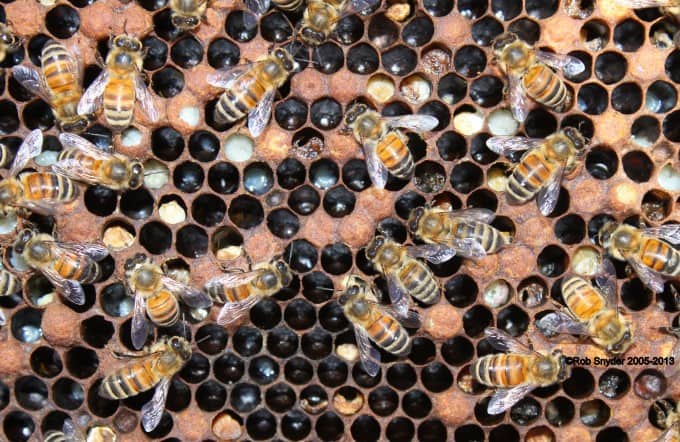
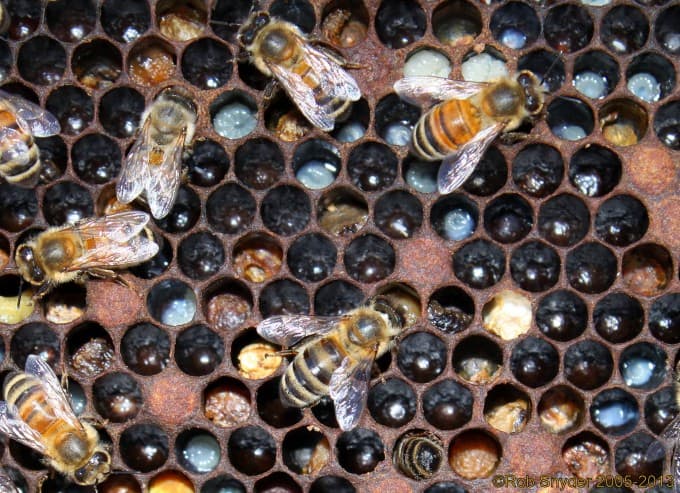

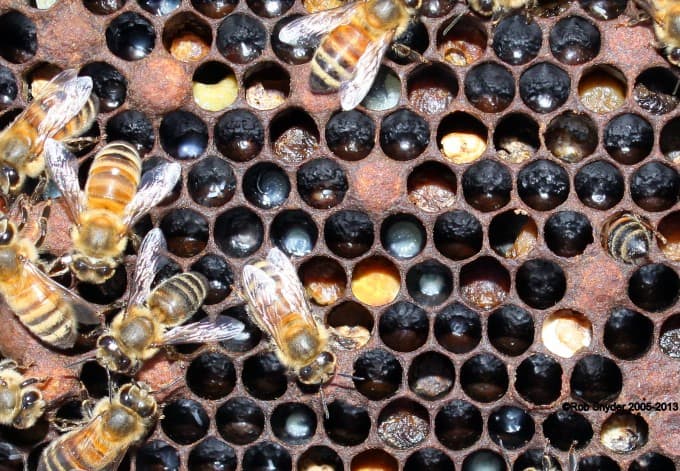
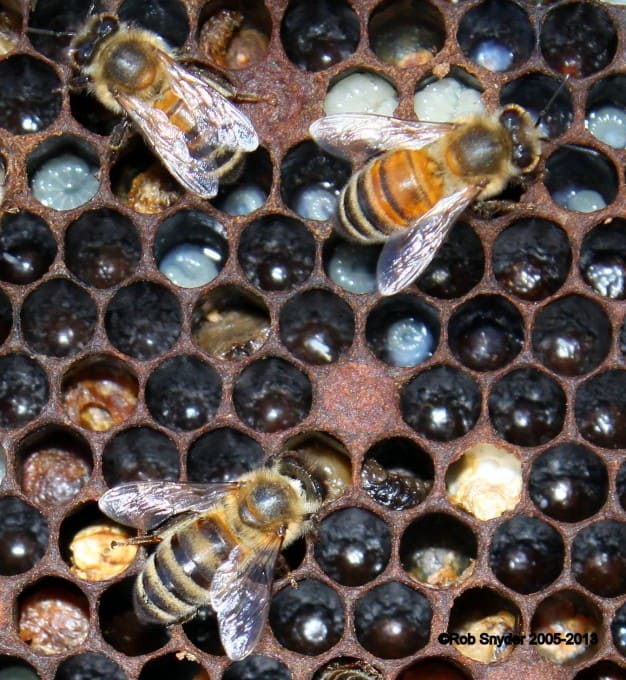
Posted 4/17/2013
Here are the reasons I think this is not a typical disease and a chemical issue. I will start with American Foulbrood. There are no perforations in sealed brood, larvae did not rope, no odor, no concave sealed cells, no proboscis from a pupa at the top of the cells. Also, the scale is wrong, scales from AFB adhere strongly to the lower sides of the cell. Now for EFB, symptoms not similar, scale does not match EFB scale which is easy to remove. With BPMS there is a population reduction, these hives were in good shape. Also the varroa levels were low. For the remaining 3 photos I put up, there were no symptoms of those problems. I think these photos help compare the difference, if someone has some other ideas please comment.



